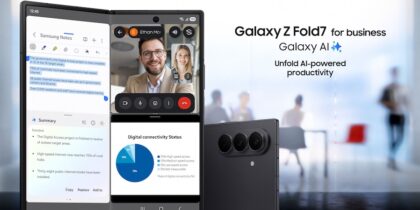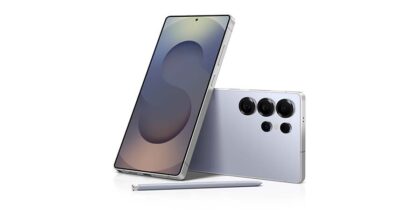As momentum accelerates around the next generation of network technology that will usher in the next wave of innovation, it’s important to take stock in industry collaboration as it relates to commercial 5G.
A key area of collaboration that has delivered valuable insights and results has been in 5G testing. Samsung Networks and Verizon have been conducting a series of tests on 5G technology, in a multiyear collaboration that delivered solutions now supporting Verizon’s 5G Home service. As a result, the learnings have helped us understand the best ways to accelerate 5G deployment.
In recent months these tests have accelerated, culminating in a test last month where Verizon engineers established a multiaccess edge computing (MEC) testbed on a 5G network in Houston, powered by Samsung’s 5G network solutions. This drove new findings in areas like AI-driven facial recognition — but more on that later. First, here is a quick rundown on our latest 5G tests — and insights they are bringing to the industry.
5G NR’s Rapid Advancement
In September 2018, Samsung and Verizon began a series of 5G New Radio (NR) tests, starting with lab demos in Dallas. This was significant in establishing 5G standards-based performance on the first commercial-grade 5G NR equipment.
The following month, Verizon and Samsung tested 5G NR equipment in the field, in Providence, R.I., establishing connectivity to a commercial 5G-upgradeable smartphone. This marked the first 5G NR connection from a 5G radio to a 5G NR device in the field.
Embrace the Next Mobile Economy
Get this free report on how to realize the potential of mobile in your business. Download Now
Closing out 2018, Samsung, Qualcomm and Verizon completed connectivity to Qualcomm’s mobile test platform featuring their commercial grade Qualcomm Snapdragon X50 5G modem and antenna modules with integrated RF transceiver, RF front-end and antenna elements. This test, conducted in Qualcomm’s San Diego facility, was one of the last steps before devices become commercially ready and available. It also leveraged Samsung’s commercial 5G NR and 4G LTE equipment, spotlighting how dual-connectivity offers a stable, effective path to commercial 5G service.
New Insights: 5G and Multi-Edge Computing
In our latest test with Verizon, conducted in Houston, TX, early this year, the promise of 5G-powered MEC was showcased — spotlighting applications that leverage hyper streaming of video, augmented reality (AR) and virtual reality (VR) more effectively in an MEC environment. The 5G test bed was established by Verizon using an MEC platform powered by Samsung 5G solutions.
Testing included a demo of an artificial intelligence (AI)-enabled facial recognition application. Using MEC equipment located in the network facility — at the edge instead of in a centralized data center — the test delivered improved performance when using facial recognition. Through faster analysis abilities, facial recognition applications identified twice as fast using 5G and an MEC platform, when compared to tests using a centralized data center. With latency cut in half and throughput accelerated, the ability to analyze data reached new levels.
As with each of Verizon and Samsung’s 5G demonstrations, this latest test continued to deliver insights into the best ways to deploy 5G in real use cases, and the benefits gained from incredible speeds and low latency. As commercial 5G rollouts begin in 2019, we look forward to pioneering the next-generation of network tests with our partners, to help define services and open up possibilities that can improve how we live, work and play.
Future-proof your mobility deployment with the forthcoming 5G-enabled smartphone from the Samsung Galaxy S10 line.









